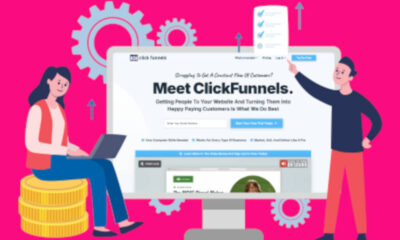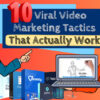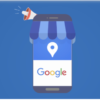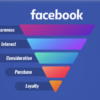Guides
The Complete Guide To Website Copywriting
Your website is not just a placeholder online. It can be a powerful tool for engaging your audience and driving conversions. But to make it work, you need to approach website copywriting in the right way.
In this guide, we’ll show you how to create website copy that focuses on your customers and what they get out of the conversation. We’ll cover everything from writing different pages on your site to making it all about your customers and their needs.
But writing copy for a website is different from writing for other mediums like emails, ads, or blogs. So if you want your website to stand out and drive results for your business, it’s important to understand the unique aspects of website copywriting.
Before we dive into the writing process, let’s start with some planning. One common mistake is trying to cram too much information onto your homepage. Visitors come to your site from different sources and are at different stages in their customer journey. Some want to learn more about your company, some want to contact you, and others want to explore your products. To cater to each of these visitors, it’s crucial to have dedicated pages for each purpose.
To get started, here are some essential pages every website should consider:
- Homepage
- About Page
- Case Studies
- Press Kits
- Pricing Pages
- Communities
- Affiliate Pages
- Career Pages
- Job Opening Pages
- Frequently Asked Questions
- Contact Page
Remember, the pages you choose will depend on your specific business and goals. The key is to keep it simple and ensure a seamless navigation experience for your visitors.
So, if you’re ready to create a website that truly connects with your audience and drives conversions, let’s dive into the art of website copywriting.
Master the Fundamentals of Website Copywriting for Maximum Impact!
No matter what industry you’re in, there are essential principles that apply to every piece of copy you write. Before diving into creating the content for your website, it’s crucial to understand these fundamentals. By doing so, you’ll greatly increase your chances of achieving your goals while also meeting the needs of your visitors.
Understanding the “What’s In It For Me?” Mindset
At its core, your visitors are not interested in you specifically. What they truly care about is what they stand to gain from engaging with you, even if it’s just an interaction with your website. It may sound blunt, but it’s the truth when it comes to copy that actually converts.
To capture their attention, you need to give them what they want. One effective approach is to put yourself in their shoes, empathize with their journey, and answer their burning question: “What’s in it for me?”
To address this question, consider your customers’ needs, desires, and pain points. You can gather this valuable information through surveys, forum posts, customer interviews, online reviews, or even testimonials from your competitors’ websites. The key is to avoid targeting a broad audience and instead focus on the ideal prospect who is most likely to say “yes” to your offer.
As you write your copy, make it clear how your visitors will benefit from being on your website or engaging with your products or services. Let’s take a look at an example to illustrate the point.
The Power of Targeted Copy
In the following example, the copy fails to address what’s in it for the visitor. Although it mentions home cleaning, all services, and a home shop, it lacks clarity.
The key lies in highlighting the contractors’ reputation, trustworthiness, affordability, responsiveness, and professionalism—the specific benefits that matter to their audience. Those are the aspects that will resonate and prompt potential customers to take action.
When crafting your own homepage copy, always stay focused on your one perfect customer and what they truly want from the conversation.
Remember, features tell, but benefits sell.
Take a desk lamp for example. If you only list its features, like being 18″ tall, with a flexible neck, and a sturdy base, it might not grab attention. People want to know what’s in it for them.
Instead, focus on the benefits. For instance, with an 18″ tall lamp, you can spread light across your entire desk. A flexible neck allows you to precisely aim the light where it’s needed most. A sturdy base ensures that interruptions won’t knock it over. The sleek, black design complements any decor. LED bulbs save energy and help protect the environment.
Clearly, there’s a significant difference between highlighting features alone and showcasing the benefits of those features that truly matter to your website visitors.
To write copy that focuses on benefits, follow these steps:
1. Identify the feature: Our candles are made from 100% natural soy wax.
2. Ask “So What?”: What does “made from 100% natural soy wax” mean? It means the candles burn cleaner without harmful toxins.
3. Dig deeper with “Which Means?”: So what does that mean? You can enjoy your favorite scents without worrying about your health or the environment.
4. Create a contrast: Without our soy wax candles, you may
Get More Conversions with Clear Copy
When it comes to writing copy for your website, being clever isn’t as important as being clear. People want to do business with you because you have something they need or can solve a problem they’re facing. Clever copy can actually confuse and frustrate your customers, leading them to leave your site. To avoid this, focus on creating clear, concise copy that effectively communicates your message and guides your visitors towards taking action.
Don’t Forget about Social Proof
If you want to convert visitors into subscribers or customers, incorporating social proof can be incredibly effective. Social proof is the idea that people are influenced to make a decision when they see others benefiting from that same decision. There are four main types of social proof you can use: customer testimonials, celebrity endorsements, press mentions, and user-generated content. Each of these types has the power to establish credibility and show your visitors that others have found value in your offer.
Let’s take a closer look at each type and how they can be used:
Customer Testimonials: Hearing directly from other customers about how your product or service has helped them is a powerful way to showcase its benefits. ClickFunnels, for example, strategically selects testimonials from customers in different sectors to provide relevant and relatable experiences.
Celebrity Endorsements: If you have any celebrity endorsements, featuring them on your website can boost credibility and authority. People tend to trust celebrities and their recommendations, so it’s a great way to gain trust from your audience.
Press Mentions: Being featured in reputable media outlets can also enhance your credibility. If your business has been mentioned or quoted in major publications, make sure to showcase those mentions on your website. This can increase trust and confidence in your brand.
User-Generated Content: Featuring videos or content created by your happy customers adds authenticity and relatability to your business. When real customers share their experiences and opinions, it helps potential customers see the value of your offer in a more unbiased way.
It’s important to remember that less is more when it comes to social proof. Only include relevant proof that speaks directly to the benefits of your offer. By using social proof effectively, you can greatly improve your conversion rates and make the selling process easier.
Keep it Consistent: How to Maintain a Strong Brand Voice
One key rule to remember when writing copy is the importance of consistency. You want your branding, voice, and tone to remain consistent across all platforms you use – whether it’s your website, social media, ads, emails, or blog posts.
But what exactly do we mean by “brand voice”? It’s your company’s personality – the way you express yourself and connect with your audience. And your brand tone? That’s the emotional response your brand voice evokes from your audience.
Consistency is key because it helps your audience immediately recognize your brand and have a positive reaction to it. So how do you achieve that?
Start by creating a “brand chart” – a visual representation of the voice you want your brand to convey. Include 3-4 key attributes that describe your brand, along with guidelines for what to do and what not to do.
For example, if you want your brand to be empowering, use positive and uplifting language. Avoid negative or discouraging phrases. By following these guidelines, you can maintain a consistent voice that resonates with your audience and leaves a lasting impression.
How To Write Homepage Copy
Now, when it comes to writing copy for specific pages on your website, you first want to think about what the goal for that page is going to be.
For your homepage, you’ll want to showcase your value proposition, and introduce people to the benefits your company provides, the problems you solve, and the solutions you offer.
Let’s take a look at the ClickFunnels homepage to break this down.
Ready to write compelling product pages that grab your customers’ attention? Here’s how to do it:
Start with a captivating and keyword-rich product title that describes your product in a way that piques interest.
Write a product description that highlights the features and benefits of your product, making sure it resonates with your target audience. Make it easy to scan so that your customers can quickly grasp all the important details.
Identify your unique selling proposition – what sets your product apart from the competition? Showcase this in your copy to make your product irresistible to potential buyers.
Don’t forget to include customer reviews and testimonials. Curate or rewrite them to provide social proof of your product’s value and quality.
Clearly explain any guarantees or warranties that come with the product. Make sure your customers understand the terms and conditions.
Outline your shipping and returns policies, with a focus on customer convenience. Let your customers know exactly what to expect when it comes to getting their hands on your product.
Finally, create persuasive and compelling calls to action. Encourage your customers to add the product to their cart or hit that “buy now” button.
By following these steps, you’ll be able to create product page copy that not only informs but also convinces your customers to make a purchase. Get started and watch your sales soar!
Discover the Secrets to Compelling About Page Copy
Forget everything you thought you knew about writing your About page. It’s not just about you and your business, it’s about your customers and what they gain from it.
Are you starting to see the bigger picture?
When crafting your About page, it’s important to include details about yourself and your company, but always keep that burning question in mind: “What’s in it for me?”
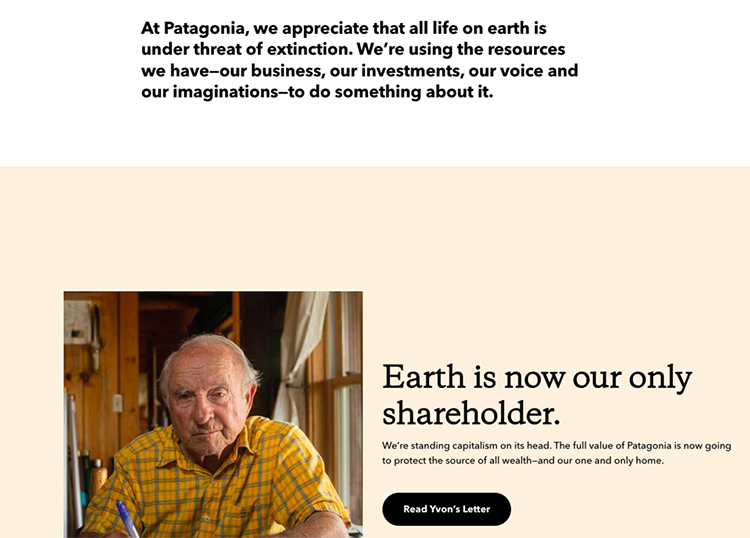
Highlighting your expertise and experience sets you apart as a trusted industry expert who can tackle your clients’ problems head-on. And let’s not forget the impressive names you’ve worked with that your visitors will surely recognize.
Your About page should also shed light on the problems you solve and your approach to solving them, helping readers grasp your true value.
But above all, the ultimate goal is to establish credibility, authority, and trust – exactly what your audience is seeking when exploring your About page.
If you’re running a non-profit, your About page should go beyond just collecting donations. It should showcase the impact those donations have had in solving the water crisis and highlight the ongoing projects and initiatives that truly matter.
Keep in mind, though, that your About page is ultimately about your audience and their expectations. Customizing the copy to share your story and motivations is essential, but always ensure it’s reader-focused, benefit-driven, and capable of establishing trust, authority, and credibility.
Want to make your contact page stand out? Here’s how.
Your contact page isn’t just about providing your contact information. It’s an opportunity to connect with your audience, save time, and address their needs.
Start by clearly listing the different ways people can reach you – phone, email, address, or contact form. But don’t stop there. Consider adding a section for frequently asked questions and common problems people may encounter. This can streamline communication and reduce the need for additional contacts.
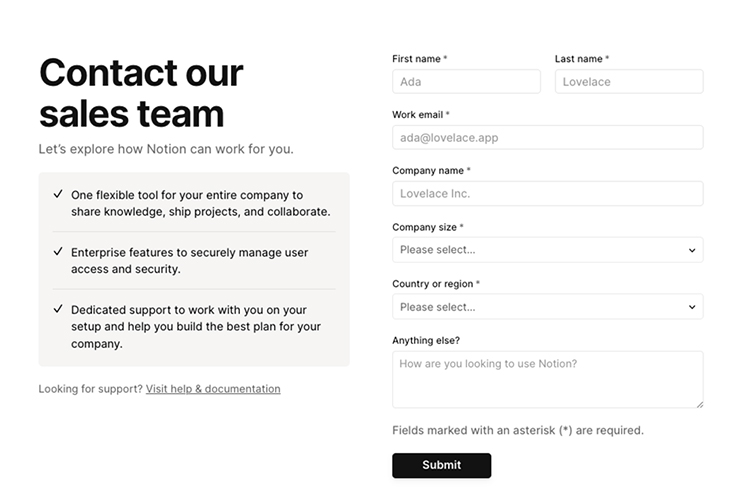
If you’re a software company, you can direct potential customers to your sales team. Or, give visitors the option to choose who they want to contact, saving you time sorting and forwarding emails.
Remember, the possibilities are endless. Make sure your contact page goes beyond basic information and focuses on nurturing your relationship with your audience. Tailor it to what they need from you.
Lastly, don’t underestimate the power of your website. It’s more than just a digital business card. Use our guide to craft compelling copy for each page, and take advantage of our free trial of ClickFunnels to simplify the website building process.
Make your contact page an asset, not just an afterthought. Get started now.
Remember, it’s important to keep the focus on your audience and what they need from you.
Your website is more than just a digital business card. With the practical tips and strategies provided in this guide, you can make your website stand out and drive conversions.
Take the time to plan out your website, including the copy for each page. And if you need help building your website, try our free trial of ClickFunnels for a simple and effective solution.
>>>Join The One Funnel Away Challenge<<<









